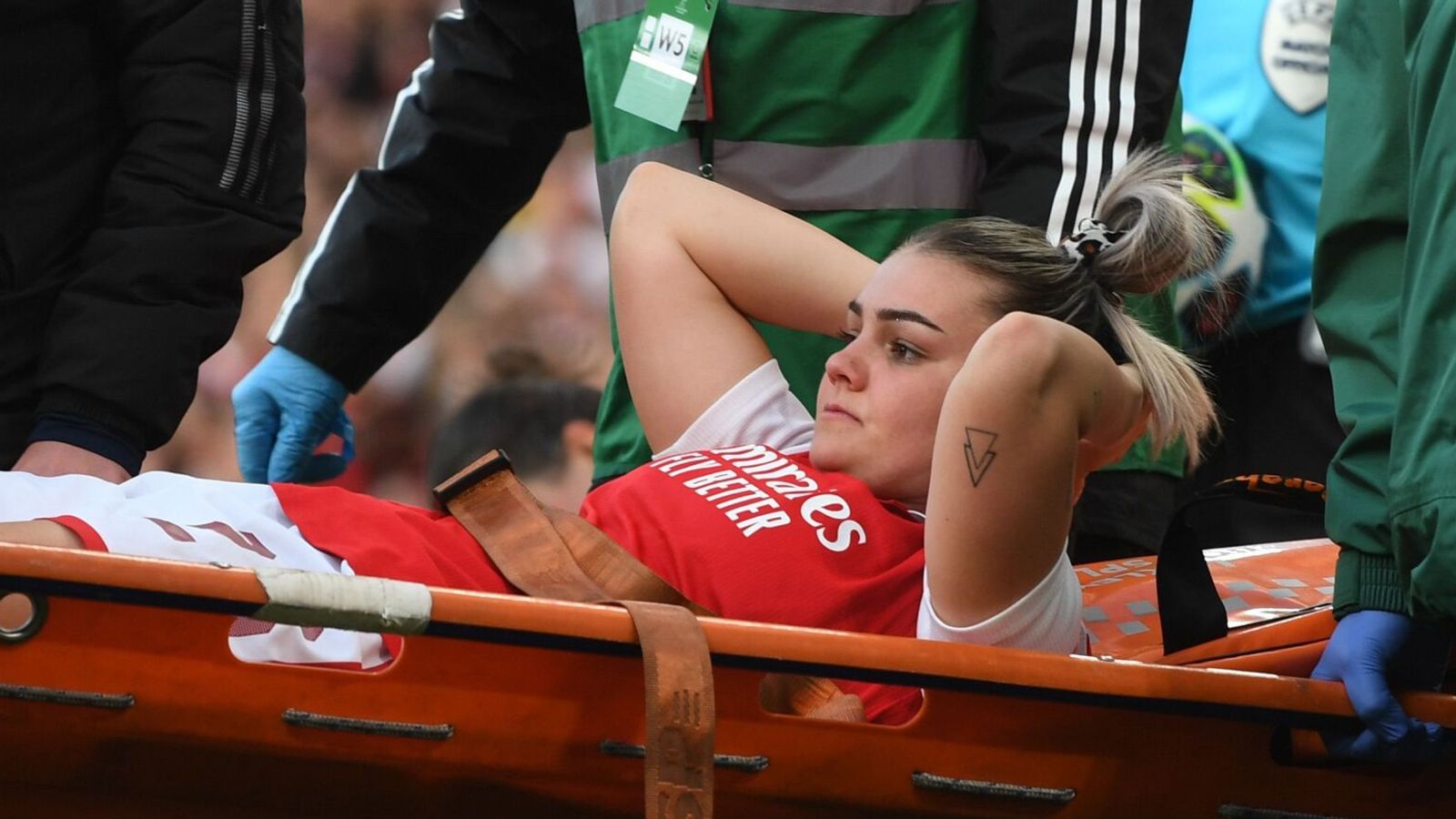Arsenal defender Laura Wienroither suffers ruptured ACL in Women’s Champions League defeat to Wolfsburg; Wienroither joins team-mates Beth Mead, Leah Williamson and Vivianne Miedema who have all been ruled out with same injury
Arsenal are “looking at the situation” after confirming defender Laura Wienroither became their fourth player to suffer an ACL rupture this season.
The 24-year-old was taken off on a stretcher during the Gunners’ Champions League semi-final second-leg defeat to Wolfsburg at the Emirates on Monday, only 18 minutes after coming on.
After tests, the club have now confirmed she has ruptured her anterior cruciate ligament, and will undergo surgery before a course of rehabilitation.
Wienroither’s lay-off marks the latest in a line of ACL injuries this season for Arsenal, who are already operating without England captain Leah Williamson, first-choice striker Vivianne Miedema and Euro 2022 player of the tournament Beth Mead.
“It is a tragedy for the player and for us as a team, we are very disappointed and sad,” said manager Jonas Eidevall on Thursday. “It doesn’t change the way that we were looking at that situation.
“We need to continue to do that and as always look at things we can improve on for the future but also to give Laura the best possible medical care so she can return as safely and as quickly as possible. Our medical team does a fantastic job with that.”
Miedema later shared a message of support for her fellow injured team-mates, posting on Instagram: “At least we will all be in the gym together. PS the ACL group is full now. Please no more.”
Wienroither’s absence will add another blow to the Gunners’ already slim hopes of lifting the WSL title. Arsenal are nine points behind leaders Man Utd with two games in hand, and face relegation-strugglers Leicester live on Sky Sports on Friday night.
Addressing the causes of his side’s increasing injury epidemic, Eidevall said: “I am afraid there is not one single answer, it is multi-faceted. We need to look at the complete picture and see which factors we can control. What we can learn and what we can do better. We need to look at that internally to see what we can do better in the future.
“Some parts are internal and things we can control, then there are things we need external co-operation with. For example, the playing schedule or the co-operation between clubs and national teams or how and when competitions are played and how the international match calendar is done. That requires governing bodies, clubs and national teams working together.
“There are bits that I think clubs can solve internally but there are a lot of things that require the whole world of football to co-operate. We need to do both.”
Consultant Orthopaedic Surgeon Nev Davies believes injury prevention programmes “work” at deterring ACL injuries but accepts that more research needs to be done to improve understanding
Why are ACL injuries so common in women’s football?
Female footballers have been found to be six times more likely to suffer from ACL injuries than their male counterparts, with former Ballon d’Or winner Alexia Putellas another to have picked up the same injury within the last year.
However, little is known about the reason for the marked difference, with a recent study showing only six per cent of sport and exercise science research is carried out purely on female athletes, limiting the scope of knowledge on the differing effects on their bodies.
A host of professionals discuss the difficulties of dealing with and recovering from an ACL injury. Plus, Gary Lewin, head of female performance services at Arsenal, explains the science behind the potentially career-threatening injury
Speaking to Inside the WSL earlier this season, female health specialist Dr Emma Ross explained: “What we do know about the menstrual cycle and injury is that the changing hormones across the cycle can impact the physiology and biomechanics of the body.
“For example, when oestrogen is elevated in the menstrual cycle, and that happens in about the second week, it can affect the stability of joints. It can interfere with the collagen in our joints and it can create looser, more lax joints. A loose joint is therefore less stable and more inclined to injury.
“So we do have some information about loose joints, but what we don’t have is the end step of whether that really does increase the risk for injury in female athletes.”
